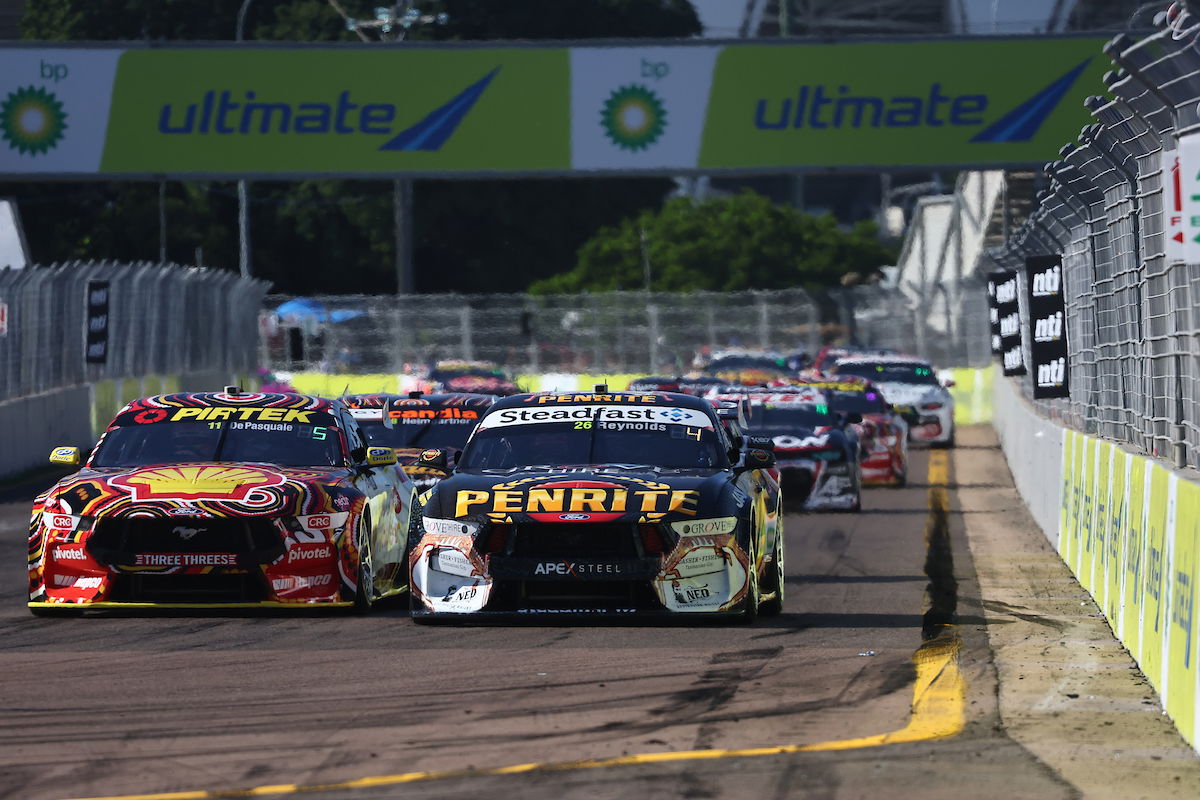

Supercars parity testing which will resume this week will include a renewed focus on engines, Speedcafe understands.
Repco Supercars Championship teams have only just returned from an NTI Townsville 500 where the Gen3 Ford Mustangs raced with a new aerodynamic package intended to provide greater rear-end stability.
While the jury is out as to how well those changes worked, the parity effort is not letting up during the break between Townsville and the Beaurepaires Sydney SuperNight at the end of this month.
It comes after a formal parity review which led to the bodywork tweaks, a process which included on-track running for Tickford Racing’s Cameron Waters at Winton and then Dick Johnson Racing’s Will Davison at Queensland Raceway.
While aerodynamics was the focus on those occasions, Speedcafe was told by sources on the ground that Supercars’ engine expert, Craig Hasted, had been carrying throttle bodies around at Winton, which provides a clue as to one of the areas which stakeholders are looking at.
Both the Ford and Chevrolet engines which were introduced to Supercars with the advent of Gen3 are of single rather than individual throttle body configuration, a change which has contributed to the small handful of left-foot brakers migrating to right-footing, regardless of vehicle.
However, it is thought that the initial crack of the throttle is somewhat more sensitive in the Mustang than in the Camaro.
Trackside observers noticed Anton De Pasquale, for example, spinning the rear wheels of his DJR Shell V-Power Mustang exiting the final corner of the Reid Park Street Circuit, behaviour which would hasten tyre wear.
He would go on to win Race 17 of the season, the first time a Mustang has been first to the chequered flag all year, having employed a three-stop strategy which was facilitated in no small part by starting the final day of the NTI Townsville 500 with a relative wealth of green tyres due to electrical problems which kept Car #11 in the garage for much of Race 16.
Ford teams and drivers were virtually unanimous in their assessment that rear tyre life remains an issue for the Mustang despite the aerodynamic tweaks, although most also cautioned that one event, at what is not an especially aero-sensitive circuit, means it is too soon to confidently assess the new package.
On the other hand, the next circuit at which the field will race, Sydney Motorsport Park, is far more aerodynamically sensitive while also having at least two reasonably braking applications which would help to show whether the new bodywork has corrected the Mustang’s pitch behaviour.
One position put to Speedcafe is that it would be premature to make further aero changes before SMP plays out, although that certainly does not rule at the prospect of further exploration before then.
Interestingly, Waters’ comments to Speedcafe after Race 16 in Townsville suggested braking and turning might have improved but not exit drive, which would seem not inconsistent with the aforementioned remarks about throttle response.
“We’re kind of still struggling in the same areas,” he said.
“We kind of can brake okay, [and] get to the corner; we’ve just got no drive off.
“Obviously, the aero has done something because we’ve changed our set-up a bit but it’s kind of a little bit early to tell if it’s given us what we need.”
The Ford and Chevrolet engines powertrains also continue to have an installed shift cut discrepancy, which is being used as interim measure to address an apparent acceleration disparity.
Regardless of the outcome of testing, the attention to engines is likely to continue given Supercars is still set to run the powertrains on a transient dynamometer and fit torque sensors to a sample of race cars.




















Discussion about this post